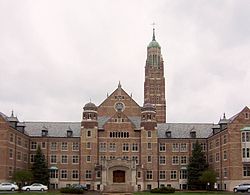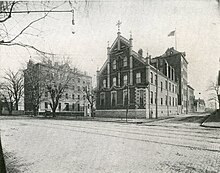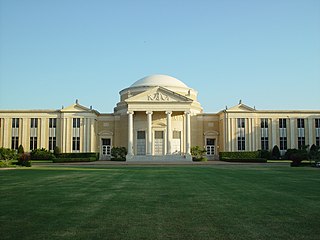
A seminary, school of theology, theological college, or divinity school is an educational institution for educating students in scripture and theology, generally to prepare them for ordination to serve as clergy, in academics, or mostly in Christian ministry.
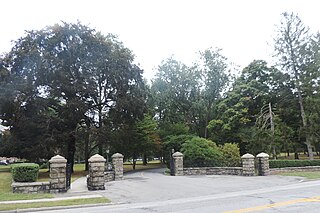
St. Joseph's Seminary and College, sometimes referred to as Dunwoodie after the Dunwoodie neighborhood of Yonkers, New York in which it is located, is the major seminary of the Archdiocese of New York. Since 2012, it has also been the major seminary for the Diocese of Brooklyn and the Diocese of Rockville Centre.

The University of Saint Mary of the Lake (USML) is a private Roman Catholic seminary in Mundelein, Illinois. It is the principal seminary and school of theology for the formation of priests in the Archdiocese of Chicago in Illinois. USML was chartered by the Illinois General Assembly in 1844. USML is often referred to by the name of its graduate program, Mundelein Seminary. Its compound name is University of Saint Mary of the Lake/Mundelein Seminary.

Bexley Hall was an Episcopal seminary from 1824 until April 27, 2013, when it federated with Seabury-Western Theological Seminary as Bexley Hall Seabury-Western Theological Seminary Federation, also known as Bexley Seabury. For three years, Bexley Seabury seminary operated from two locations—in Bexley, Ohio, a suburb of Columbus, and in Chicago, Illinois —until July 2016 when it consolidated at a single campus location at Chicago Theological Seminary in Chicago's Hyde Park/Woodlawn district. Bexley Seabury is one of 10 official seminaries of the Episcopal Church in the United States of America. Bexley Seabury's mission includes, "creating new networks of Christian formation, entrepreneurial leadership and bold inquiry in the service of the Gospel".

The Diocese of Columbus is a Latin Church ecclesiastical territory, or diocese, of the Catholic Church covering 23 counties in central Ohio in the United States. It is a suffragan diocese in the ecclesiastical province of the metropolitan Archdiocese of Cincinnati.

John Joseph Jessing a German-American immigrant, who became a Catholic priest in the United States, and was a pioneer in Catholic orphanage work and Catholic education. He was also the founder of the Pontifical College Josephinum in Columbus, Ohio, in 1888.

Frederick Francis Campbell is an American prelate of the Roman Catholic Church. Campbell served as bishop of the Diocese of Columbus in Ohio from 2005 to 2019 and as an auxiliary bishop of the Archdiocese of St. Paul and Minneapolis in Minnesota from 1999 to 2004.
The Methodist Theological School in Ohio (MTSO) is a graduate theological school and seminary in Delaware, Ohio. MTSO is one of the 13 official seminaries of The United Methodist Church.

St Joseph's College is a former Roman Catholic seminary and boarding school in Up Holland, Lancashire, England. The foundation of the original building was laid in April 1880 and the college opened in 1883. The buildings have since been deconsecrated.
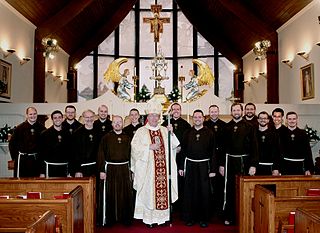
Robert Joseph Baker is an American prelate of the Roman Catholic Church. He served as bishop of the Diocese of Birmingham in Alabama from 2007 to 2019 and as bishop of the Diocese of Charleston in South Carolina from 1999 to 2007
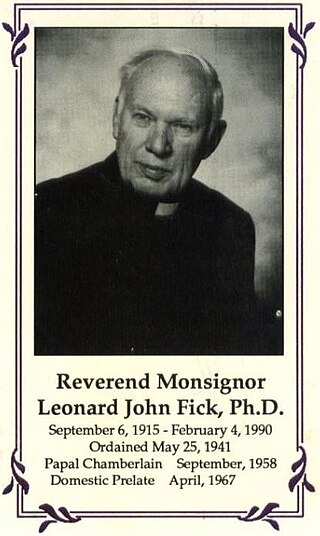
Leonard J. Fick was an American Roman Catholic priest, scholar and educator, college president, author in Ohio whose educational career spanned over fifty years. Fick devoted more than sixty years to the Pontifical College Josephinum and is considered by many to be its most prominent 20th century graduate, scholar, administrator and leader having occupied more positions of responsibility and leadership than anyone else during that time. Father Fick, as he preferred to be called, at both Ohio Dominican University, the Josephinum and other institutions and churches, in both the classroom and from the pulpit, inspired generations of English students with his witty insights into the intricacies of the English language – into writing, poetry, literature and theatre and in insights into the life of Jesus Christ and his Church. Fick's critical and mentoring skills influenced a host of college-educated men and women who would go on to be priests, teachers, scholars and leaders in all walks of life.

Earl Alfred Boyea Jr. is an American prelate of the Roman Catholic Church. He has been serving as the bishop of the Diocese of Lansing in Michigan since 2008. He previously served as an auxiliary bishop of the Archdiocese of Detroit in Michigan from 2002 to 2008.

Sylvester Horton Rosecrans was an American prelate of the Roman Catholic Church. He served as bishop of the Diocese of Columbus in Ohio from 1868 until his death in 1878. He previously served as an auxiliary bishop of the Archdiocese of Cincinnati in Ohio from 1862 to 1868.

John Ambrose Watterson was an American prelate of the Catholic Church. He served as bishop of the Diocese of Columbus in Ohio from 1880 until his death in 1899.

Eduardo Alanis Nevares is an American prelate of the Roman Catholic church. He has been serving as an auxiliary bishop of the Diocese of Phoenix in Arizona since 2010.
An ecclesiastical university is a special type of higher education school recognised by the Canon law of the Catholic Church. It is one of two types of universities recognised, the other type being the Catholic university. Every single ecclesiastical university is a pontifical university, while only a few Catholic universities are pontifical.
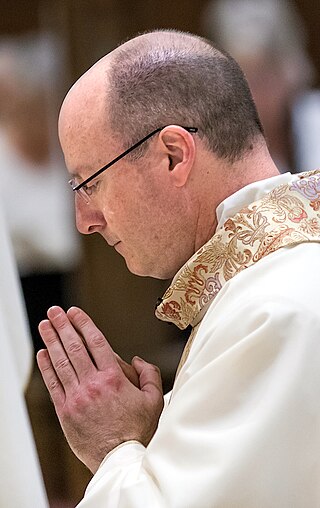
William Shawn McKnight, also known as W. Shawn McKnight, is an American prelate of the Roman Catholic Church who has been serving as bishop of the Diocese of Jefferson City in Missouri since 2017.

Holy Family Church is a parish church of the Roman Catholic Diocese of Columbus, in the Franklinton neighborhood of Columbus, Ohio. The congregation was founded in 1877 and the current church was completed in 1889. The Mercerdarians took over pastoral care of the church in 2022.
Steven Beseau is an American Catholic priest of the Archdiocese of Kansas City who has served as rector and president of the Pontifical College Josephinum since 2019.
Saints Peter and Paul Seminary was a Catholic high school seminary in Heath, Ohio, serving the Pontifical Institute for Foreign Missions (PIME). It was founded in 1956 and closed in 1990. Its Heath campus was subsequently acquired by the Diocese of Columbus and operated as a retreat house and as a convent for Dominican Nuns of the Perpetual Rosary until their departure in 2023.
